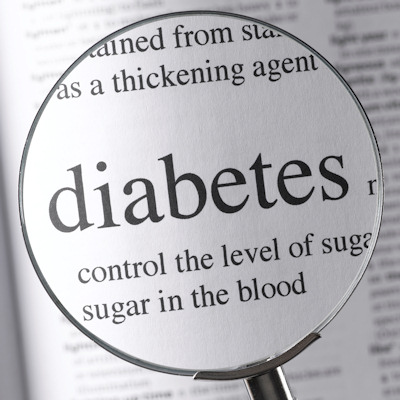 EMR screening program identifies prevalent undiagnosed diabetes
EMR screening program identifies prevalent undiagnosed diabetes
An electronic medical record (EMR) diabetes screening program in an urban emergency department identified the prevalence of undiagnosed diabetes. The report, published on January 26 in JAMA Network Open, underscored long-existing disparities in type 2 diabetes diagnosis and treatment by race, ethnicity, and socioeconomic factors. Such disparities increased during the COVID-19 pandemic. Read More
 Mixing cancer drugs in nanoparticle combinations improves efficacy in mice
Mixing cancer drugs in nanoparticle combinations improves efficacy in mice
Using polymer nanoparticles to carry multiple cancer drugs achieves better outcomes than administering the combination of therapeutics without a delivery vehicle, according to preclinical research published on 26 January in Nature Nanotechnology. Read More
 CVD deaths undergo largest single-year increase since 2015
CVD deaths undergo largest single-year increase since 2015
The American Heart Association's report "Heart Disease and Stroke Statistics—2023 Update" outlines the most significant single-year increase in cardiovascular disease (CVD) deaths in the U.S. since 2015. Read More
 Aston University partners with longevity biotech to advance lung disease treatment
Aston University partners with longevity biotech to advance lung disease treatment
Aston University's work on small molecule inhibitors of transglutaminase 2 has spawned a biotech firm focused on treating the chronic lung disease idiopathic pulmonary fibrosis. Read More
 Study finds tuberculosis vaccines cost-effective in lower-income countries
Study finds tuberculosis vaccines cost-effective in lower-income countries
Harvard University researchers and collaborators conducted a modeling study that showed tuberculosis vaccination could be cost-effective in 73 of 105 low- and middle-income countries. The results, published on January 24 in PLOS Medicine, also predicted $474 billion in vaccine-related benefits by 2050. Read More
 Abnormal 12-hour cyclic activity found in schizophrenic brains
Abnormal 12-hour cyclic activity found in schizophrenic brains
University of Pittsburgh researchers have found the first evidence of 12-hour cycles of gene activity, called ultradian rhythms, in the human brain. The National Institutes of Health-funded study, published in PLOS Biology on January 24, also reveals that some ultradian rhythms are missing or altered in the postmortem brains of patients with schizophrenia. Read More
 DNA tests show that mystery inflammatory syndrome may not be so rare
DNA tests show that mystery inflammatory syndrome may not be so rare
A rare syndrome that was first described in 2020 affects more than 15,000 adults ages 50 and older, according to an estimate published on Tuesday in JAMA Network. Read More
 Predicting metabolic bone disease in infants
Predicting metabolic bone disease in infants
Chinese researchers and their collaborators have developed an artificial neural network model that can help predict metabolic bone disease in infants in both the prenatal and postnatal periods. The study, published on January 23 in JAMA Network Open, sought to detect the pivotal factors associated with MBD in each period. Read More
 Peptide suppresses inflammation in mice, spurs work to develop 1st targeted lung injury therapy
Peptide suppresses inflammation in mice, spurs work to develop 1st targeted lung injury therapy
A peptide has suppressed acute lung injury (ALI) in mice harmed by bacterial infection, revealing a path to developing the first targeted medical therapy for the condition. Read More
 mRNA COVID-19 booster rates low among immunocompromised
mRNA COVID-19 booster rates low among immunocompromised
Researchers have found low adherence to the Centers for Disease Control and Prevention's mRNA monovalent COVID-19 booster recommendations among immunocompromised individuals. Read More
Conferences
Science Briefs
Member Rewards
Earn points for contributing to market research. Redeem your points for merchandise, travel, or even to help your favorite charity.
Research Topics
Interact with an engaged, global community of your peers who come together to discuss their work and opportunities.
Connect
Tweets by @ScienceBoard






